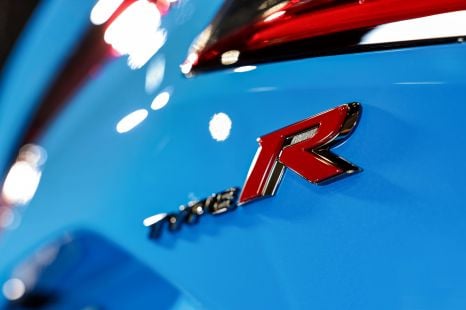

Damion Smy
Honda Prelude Type R ruled out... for now
3 Hours Ago
Volvo is the latest brand to join the burgeoning electric car space in Australia. Its first offering pairs smooth, silent electric power with a sensible, luxurious SUV body.
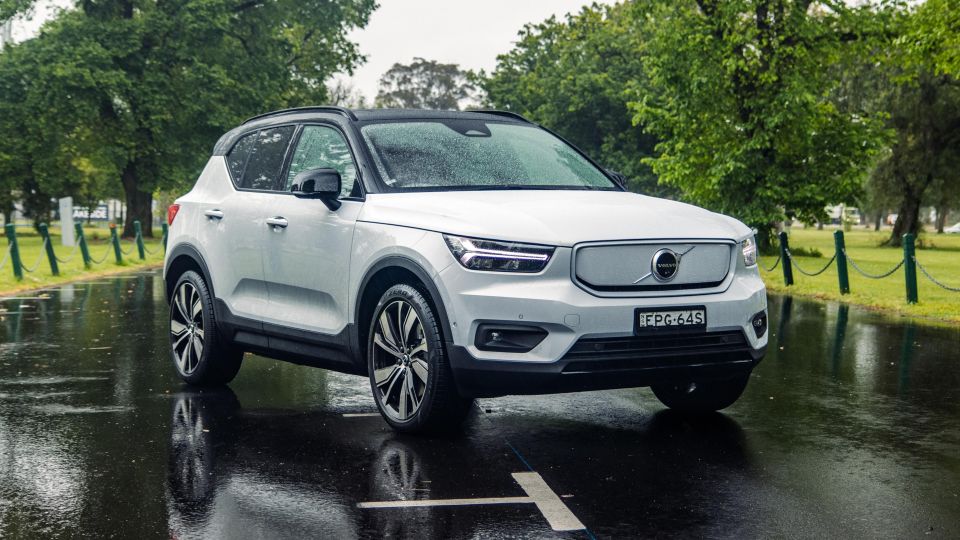
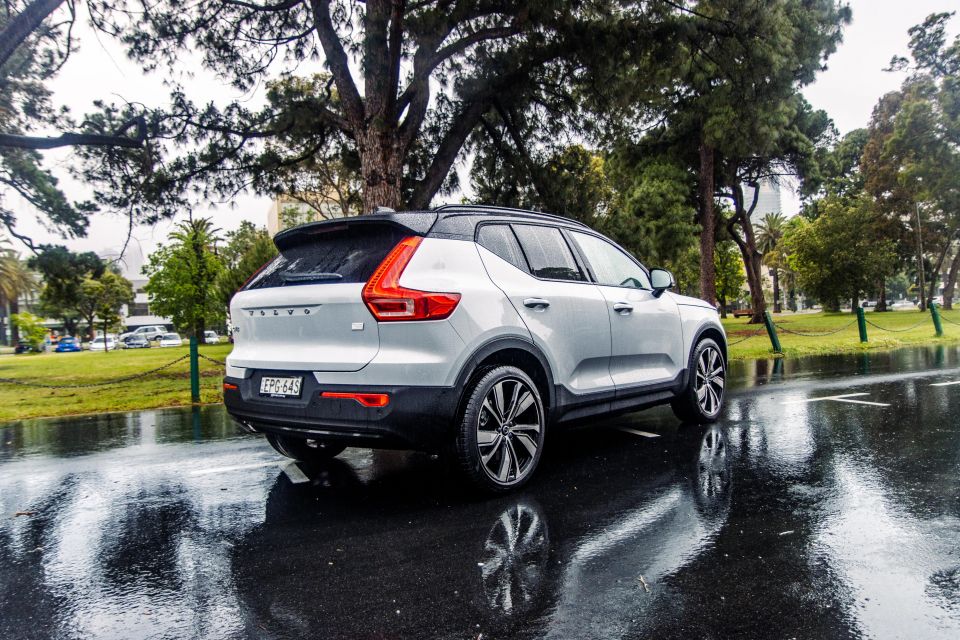

Contributor
New from
$46,990
excl. on-roads

Contributor
New from
$46,990
excl. on-roads


Contributor
New from
$46,990
excl. on-roads

Contributor
New from
$46,990
excl. on-roads
Quickly see how this car stacks up against its competition. Select any benchmark to see more details.
Where expert car reviews meet expert car buying – CarExpert gives you trusted advice, personalised service and real savings on your next new car.
Volvo is on the charge in Australia at the moment. Supply constraints and COVID crunches have held it back slightly, but the brand is still on track to set an all-time sales record Down Under in 2021.
The big growth has come on the back of some really good products. The XC90 SUV is holding up well despite its age, the XC60 is a unique rival to the BMW X3, and the XC40 packs an impressive amount of space into its compact-ish body.
Although it offers plug-in hybrid takes on all its SUVs, we’ve had to wait for the first electric Volvo. Eventually the whole range will be battery-powered, but for now the pure-electric line-up is limited to one variant of the XC40.
We still miss out on some of the good stuff, but Australia’s electric car market is catching up with the rest of the world.
There’s the best-selling Tesla Model 3 and incoming Tesla Model Y, along with the Mercedes-Benz EQA, Hyundai Ioniq 5, and the closely-related Polestar 2 to compete with. Kia also has the EV6 on the way Down Under.
In other words, just being electric isn’t enough to guarantee the 2022 Volvo XC40 Recharge Pure Electric success. It needs to be good.

The Volvo XC40 Recharge Pure Electric is priced at $76,990 before on-road costs, equivalent to just over $82,000 drive-away using the Volvo Australia website and a Melbourne postcode.
There’s only one model, and there’s only one price. Simple.
The electric XC40 goes head-to-head with the Mercedes-Benz EQA 250 ($76,800) and Tesla Model Y ($TBC), along with its sportier sibling from Polestar, the 2 Long Range Dual Motor ($74,990 with a full suite of safety assists).
It also takes on the Hyundai Ioniq 5 AWD, priced at $75,900 before on-roads, and will eventually battle the Kia EV6.
It’s $10,000 more expensive than the petrol-electric XC40 Recharge Plug-in Hybrid, and just shy of $30,000 more than the cheapest petrol-powered XC40.
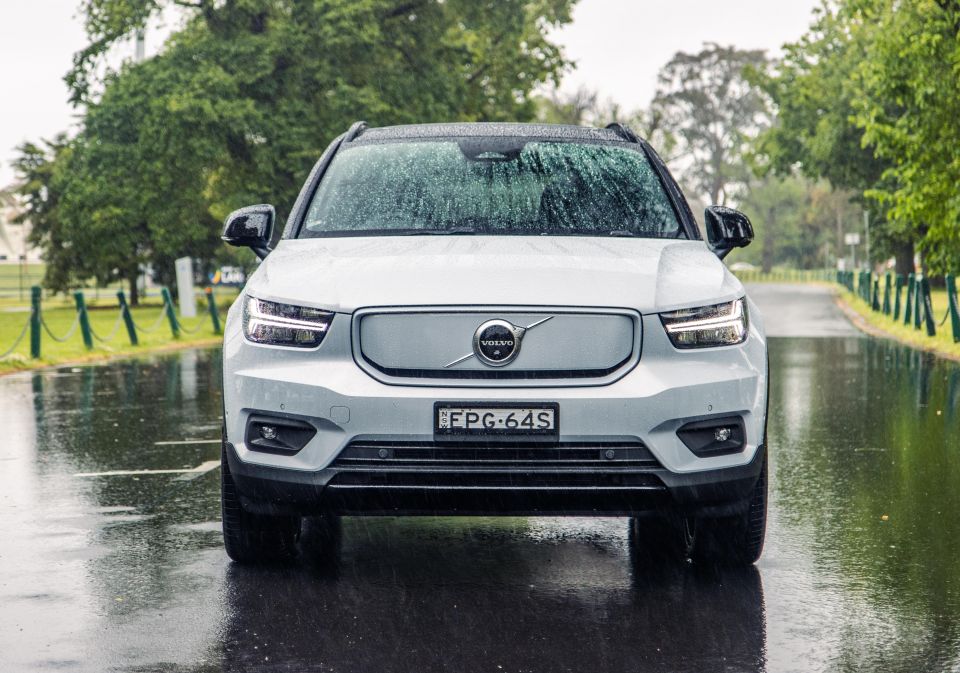
Buy your new car without the stress. It's fast, simple and completely free.

Great service from Travis and team, second time I have used this business would not hesitate to recommend them to anyone
Craig C.
Purchased a Ford Ranger in Sunshine Coast, QLD
CarExpert helped Craig save thousands on his Ford Ranger, now let us save you on your next new car.
Find a dealOnly one version of the XC40 Recharge Pure Electric is offered in Australia, and it comes fully loaded.
Highlights include:
The only options are paint finishes, and even they’re no-cost. Speaking of which, our silver tester looked very sharp, but the Sage Green, Denim Blue, or Fusion Red finishes are arguably more handsome again.
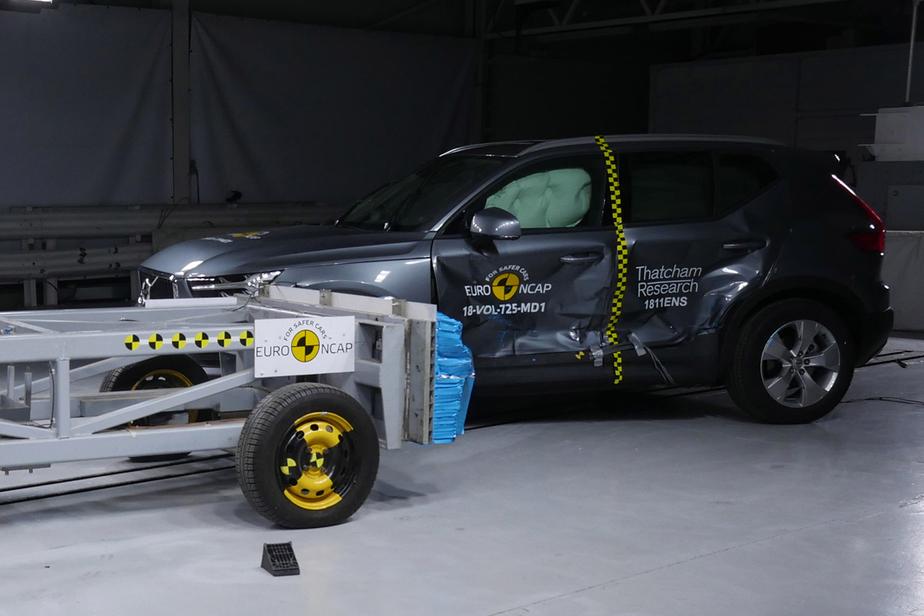
The Volvo XC40 has a five-star ANCAP safety rating based on testing conducted in 2018.
This testing was conducted on the petrol-powered XC40, but the rating has since been extended to include the pure-electric and plug-in hybrid Recharge models.
All models received an adult occupant protection score of 97 per cent, child occupant protection score of 84 per cent, vulnerable road user protection score of 71 per cent and a safety assist score of 78 per cent.
All 2022 Volvo XC40 models come standard with autonomous emergency braking (AEB) with vulnerable road user detection, as well as lane-keep assist, lane departure warning, blind-spot monitoring, rear cross-traffic alert, as well as front, side, head and driver’s knee airbags.
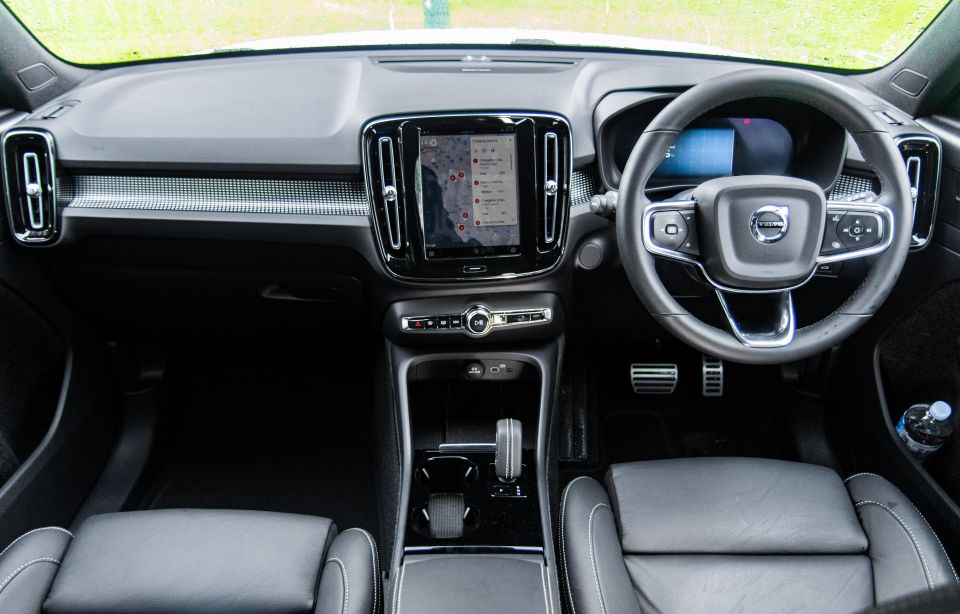
There’s one big difference between the XC40 Recharge Pure Electric and the regular line-up, and that’s the Android Automotive infotainment system. We’ll get to that, but before we do it’s worth talking about how well thought-out the XC40 interior is.
This is technically the baby of the Volvo range, but there’s a real sense of space from behind the wheel.
The front seats offer a commanding view over the square bonnet, and strike a perfect balance between soft padding and the sort of support you need on longer drives. Volvo traditionally does some of the best pews in the business, and the XC40 continues the tradition.
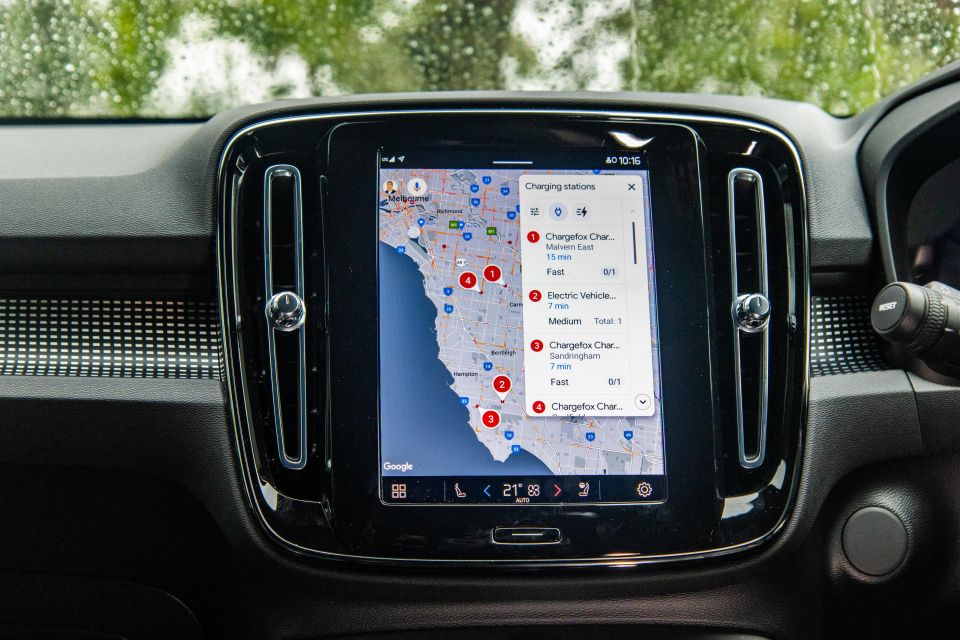
With an upright dashboard and minimalist, crisp lines, you won’t be mistaking the XC40 for anything but a Volvo at first glance. Dominating the dash is a vertically-oriented 9.0-inch touchscreen, which sits in the same housing as the display in the petrol model but runs newer software.
Like the related Polestar 2, the XC40 Recharge has Android Automotive infotainment. The bones of the software were developed by Google, which means you get Hey Google voice control and Google Maps standard, but the final system is set up by Volvo to look familiar to anyone who’s used the Sensus system in the current XC40.
It’s snappy to use, and the ability to download apps like Spotify from the Google Play store opens the door for a level of customisation not currently possible in most infotainment systems. Having the same people who do the software for mobile phones design your Bluetooth interface, for example, means this is one of the easiest cars in which to find a contact and make a call on the move.
When it’s connected to a network, Hey Google is more useful than Hey BMW or Hey Mercedes ever could be… but when it’s not connected to a network, the voice assistant is far less useful. Apple CarPlay mirroring is likely coming before the end of 2022.
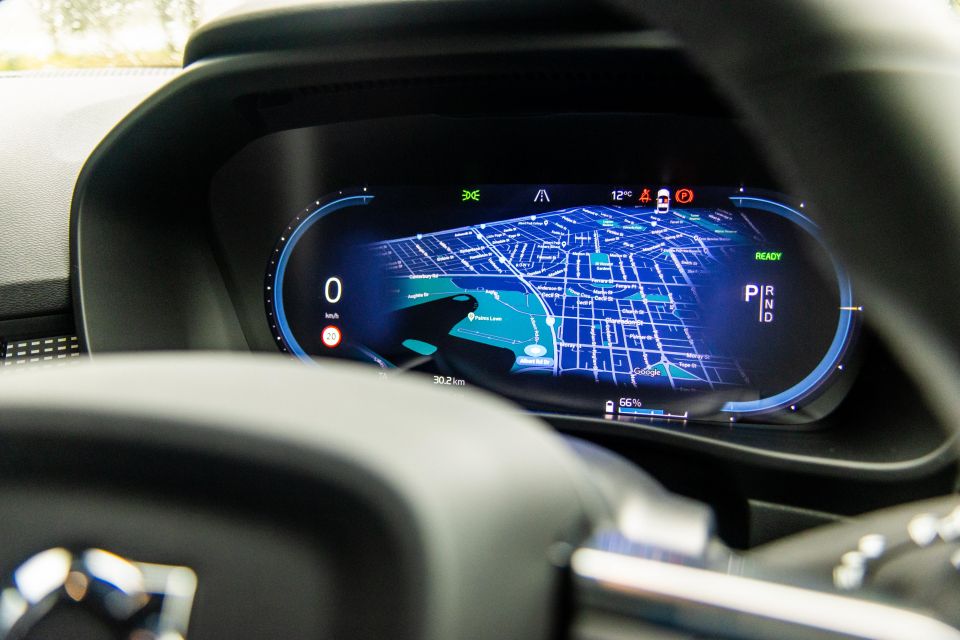
The driver is faced with a clean, simple digital instrument binnacle with inbuilt Google Maps. It’s excellent, although you’re light on for configuration options compared to what’s on offer in some rival luxury marques.
The petrol and PHEV are both standouts when it comes to interior storage, and the electric model is no different. The deep door pockets, spacious transmission tunnel (this is based on a petrol car after all), and under-dash space are all cleverly designed.
Rear seat passengers are better catered for than you might expect of a car that’s relatively compact on paper. For one, they get their own vents, along with a fold-down central armrest and spacious door pockets. The tall roofline means headroom is good enough for adults to get comfortable back there, even with the panoramic sunroof, and the amount of legroom will accomodate tall teenagers.
Some compact-ish crossovers are a kid-only proposition in the rear, but the XC40 punches above its weight. It’s a good place to spend time, and demands few compromises compared to a similarly-priced petrol car.
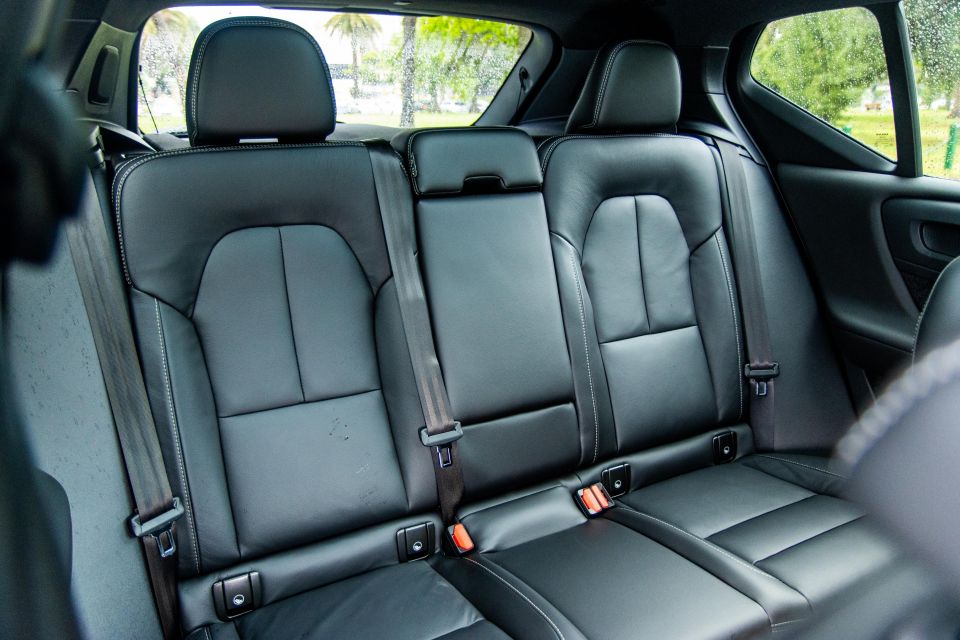
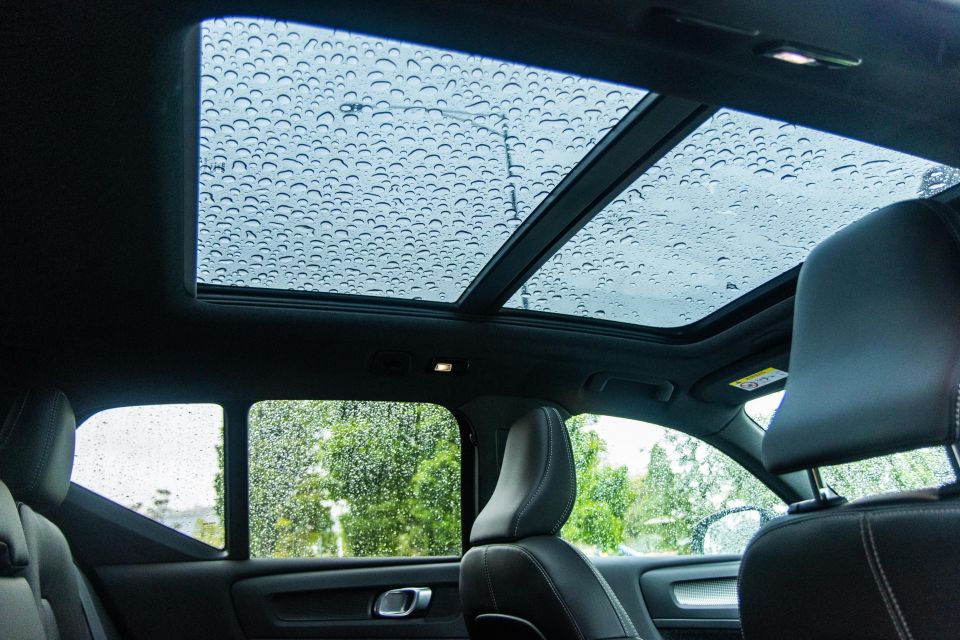


There are two ISOFIX points and three top-tether anchors back there for child seats.
Luggage space is 460L, expanding to 1336L with the second row folded. The boot floor is flat, but it can be folded in half hang shopping bags, or raised up to reveal a deep cavity beneath it perfect for storing charge cables – or for hiding bags and laptops.
There’s a small storage space beneath the bonnet, but it’s not what you’d call capacious. It’s best reserved for the charge cables, but not much more.
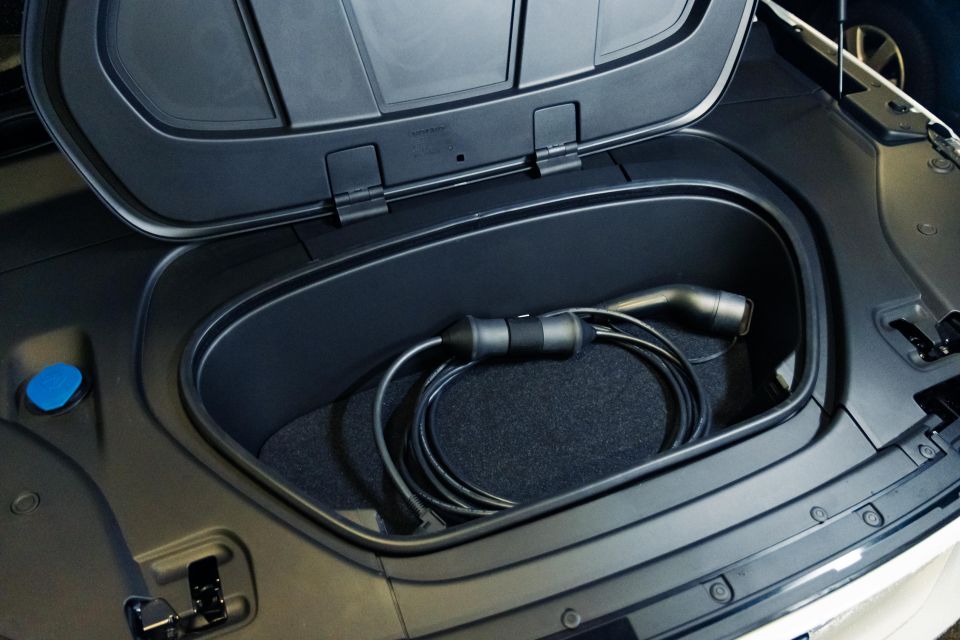
Power in the XC40 comes from two electric motors, each making 150kW of power. There is no entry-level, single-motor model.
Combined peak power is 300kW and combined peak torque is 660Nm, good for a 4.9-second sprint to 100km/h.
Under the floor is a 78kWh lithium-ion battery pack, and Volvo says you’ll get 418km on a full charge using the WLTP test cycle. That’s equivalent to energy consumption of 18.7kWh per 100km.
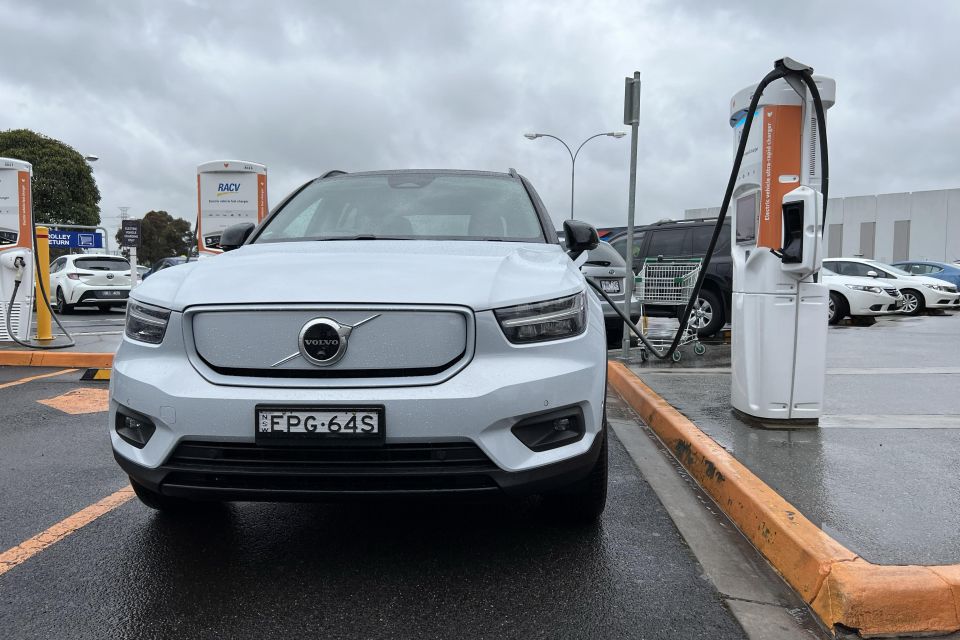
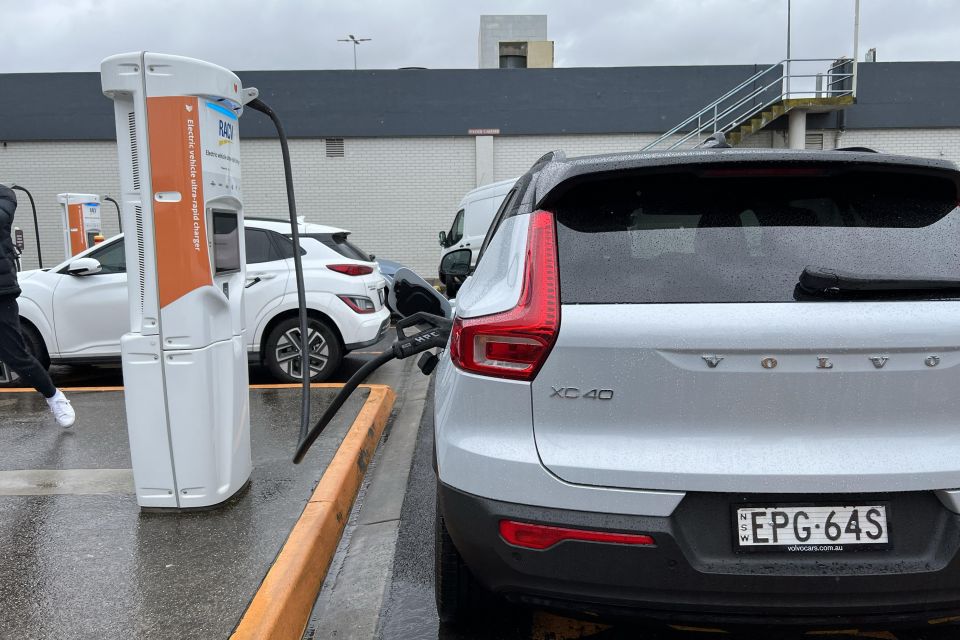
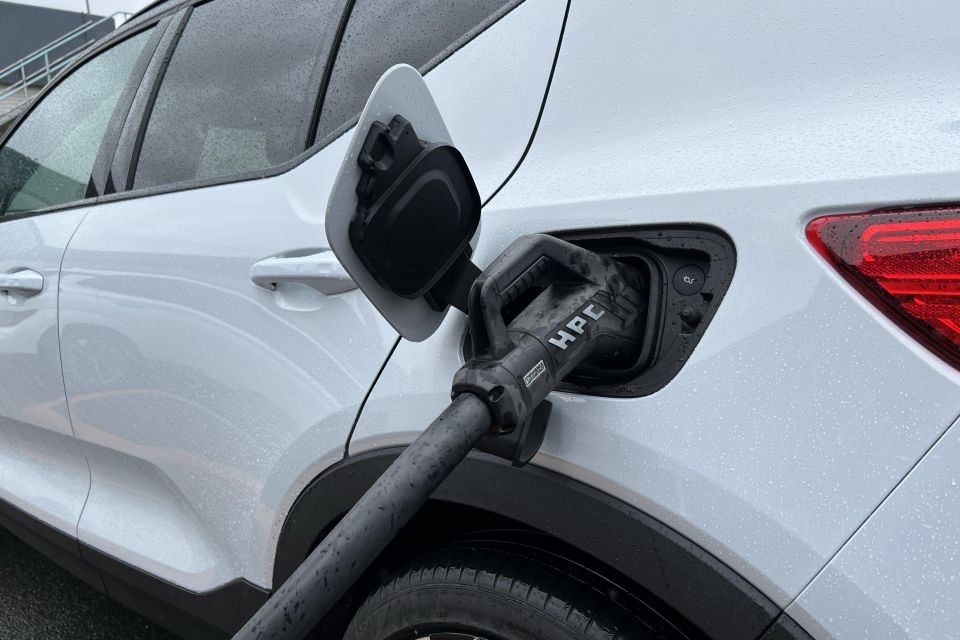

We saw 25.2kWh per 100km on the same sustained highway run as the Hyundai Ioniq 5 during our recent comparison, and consistently used between 22 and 23kWh per 100km on a city commute.
The Volvo’s peak charging speed is 150kW, but the way the car manages its battery temperature means you’ll only see charge speeds north of 100kW when the battery is between 20 and 40 per cent, before it tapers to around 70kW when you hit around 55 per cent charge.
We plugged into a 350kW fast charger and, with 55 per cent charge as a starting point, saw between 45kW and 70kW charge speeds on the way to 88 per cent.
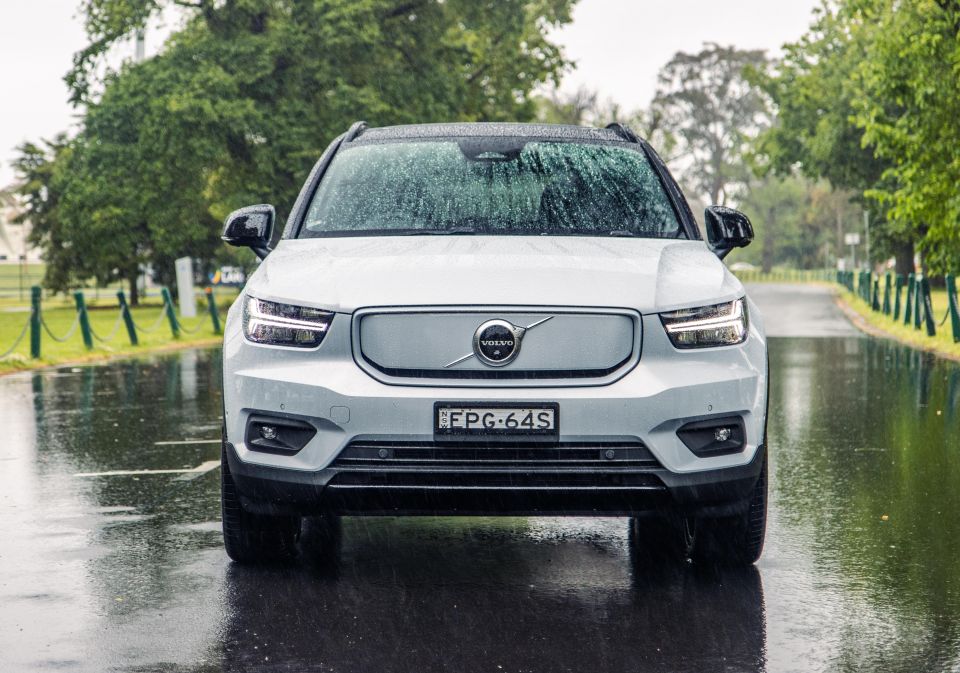
The Volvo looks heavy and Scandinavian from the outside, but it has a reasonably sporty feeling from behind the wheel.
There’s no messing around with keys, nor a legacy internal-combustion starting process to take care of. You just get in the car, flick it into drive and… drive.
The right-hand pedal is heavy, the steering is more direct, and the motors pack an immediate punch when you dip into the throttle travel. It gives you a proper shove in the back off the mark, and feels every bit as quick as the closely-related Polestar 2 Dual Motor AWD on the move – even though the Volvo is taller, heavier, and slower on paper.
It still feels hot-hatch fast off the mark, which is ideal for the inner-city traffic light grand prix. There’s never any wheelspin, and you don’t need to mess around with launch control to go fast.
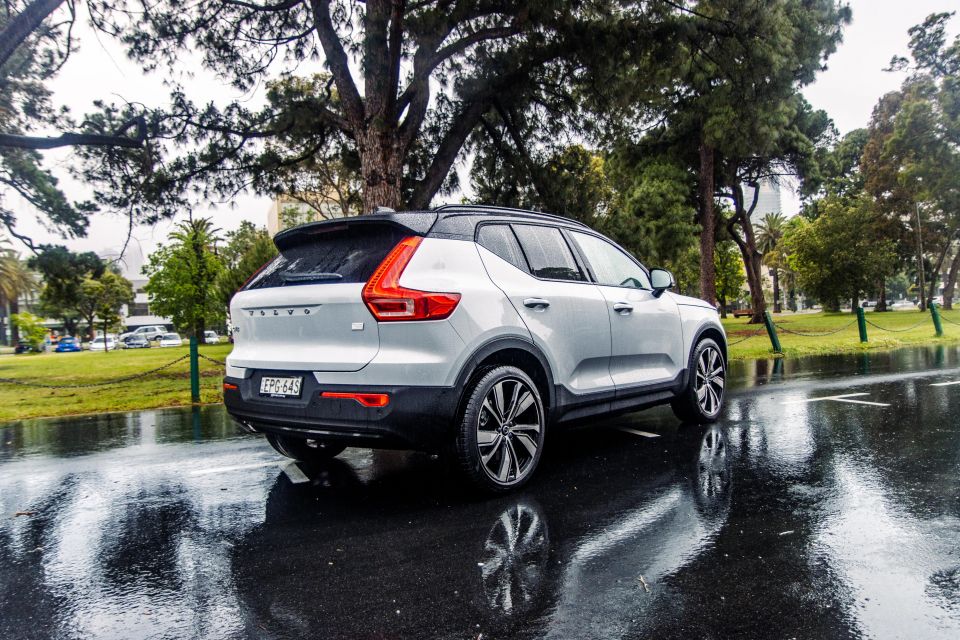
Volvo has kept choices about how the XC40 Recharge drives to a minimum. The default for regenerative braking is designed to mimic a conventional car, forcing the driver to use the brake pedal to come to a complete stop and creeping off the line, but once you select one-pedal mode it just stays there.
The regenerative braking initially feels quite aggressive when you lift off the accelerator, but it doesn’t take too long to dial into what’s required from the XC40. Of course, it’s perfectly smooth and quiet at low speeds. Commuting in electric cars is just nice, especially after a tough day at work.
The XC40 Recharge is a happy camper in the city, where its upright body and compact proportions make it a natural fit.
It squeezes easily into tight parking bays, and is easy to thread through my tight underground garage. The grainy surround-view camera isn’t exactly ideal for small spaces, though, and undermines the high-tech feeling you’d expect of an electric car.
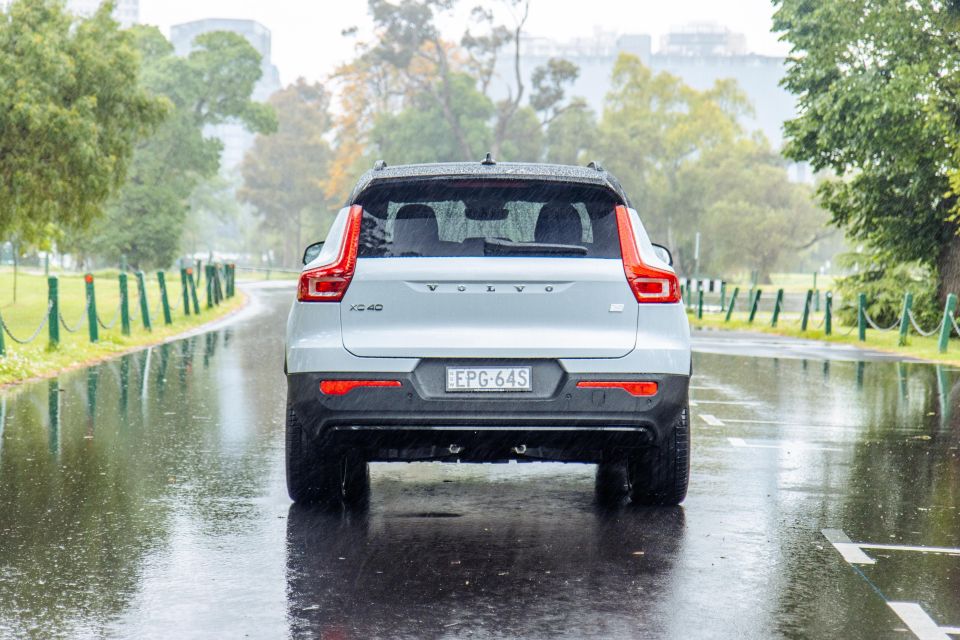
With a relatively springy, taut suspension tune, the XC40 never feels outright plush. You’re aware of its weight, and the fact keeping all 2100kg of it in check is tricky when you’re stuck with a passive steel suspension setup instead of more expensive air or adaptive dampers.
With that said, the Recharge still does a good job keeping city bumps and potholes out of the cabin, and it feels tied-down over big crests and dips on the highway. It feels like a shrunken XC60 or XC90 at speed.
Road noise is quite noticeable in the Volvo – as was the case in the Polestar 2 – especially on country roads. That isn’t uncommon in luxury European cars, designed to work on billiard-table-smooth tarmac rather than coarse-chip roads.
The tyre roar and wind rustle from the mirrors will have you turning up the stereo a couple of clicks, although it’s still quieter than, say, a Mercedes-Benz GLA on similar roads.
Where the Volvo really shines on the open road is when it comes to its driver assists. It’ll keep its distance to a car in front, and actively steer to stay in its lane. Unlike some cars, where you feel like you’re fighting the computer brain, the Pilot Assist in the XC40 feels just about right.
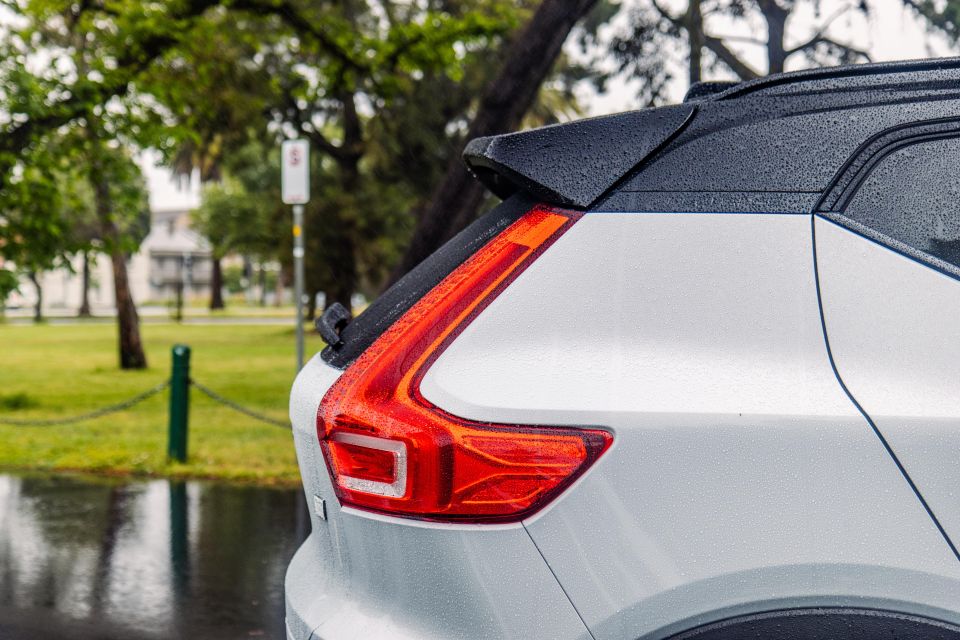
Where expert car reviews meet expert car buying – CarExpert gives you trusted advice, personalised service and real savings on your next new car.
The XC40 Recharge will be backed by a five-year, unlimited-kilometre warranty like the wider Volvo range.
The first three years of servicing is included with the price of purchase, including consumables like brake pads, discs, and wiper blades.
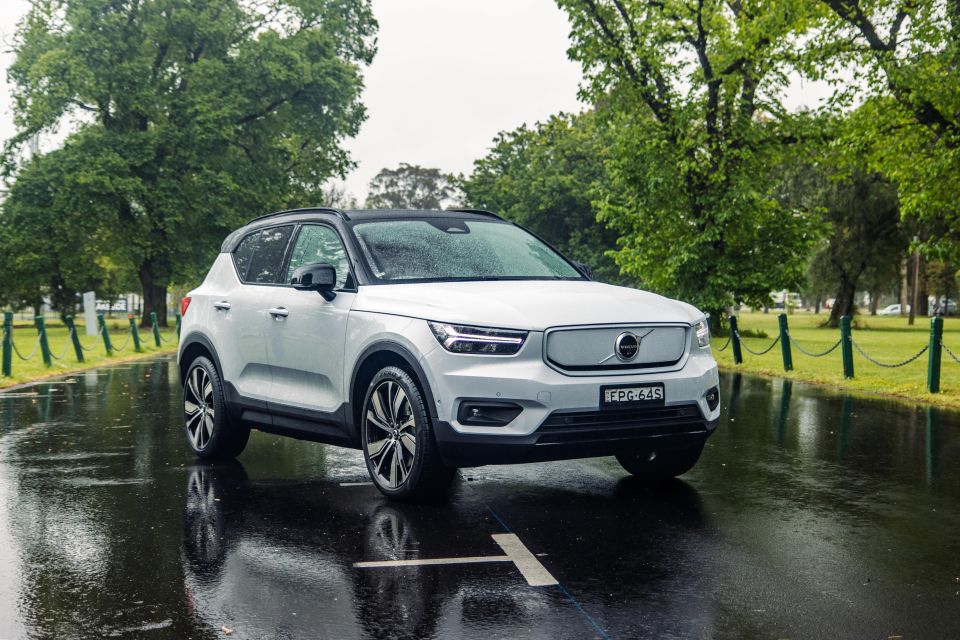
The XC40 Recharge Pure Electric is an electric car for people who don’t want to shout about the fact they’re driving an electric car.
It feels mostly conventional from the behind the wheel, with the same practical layout as the petrol-powered XC40 range on the inside, and the same city-friendly dimensions on the outside.
Volvo also has a huge selling point in its Android Automotive software, although there are still some bugs that need squashing.
In the introduction we said the XC40 Recharge Pure Electric can’t get away with just being electric, it also needs to be good.
While it doesn’t reset the segment benchmarks or break far from convention, there’s no doubt it hits the mark.
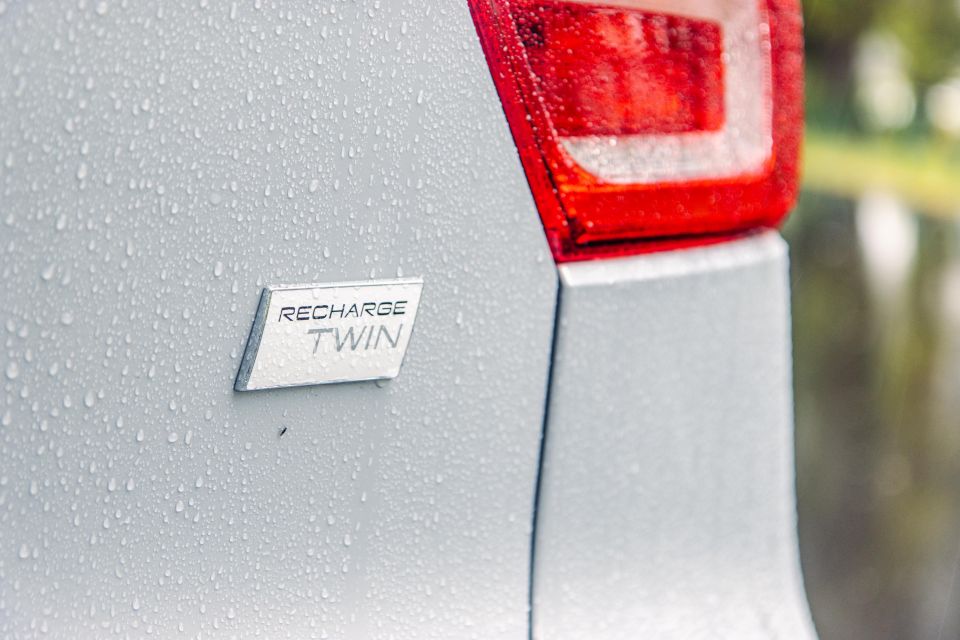
Click the images for the full gallery
MORE: Everything Volvo XC40
Where expert car reviews meet expert car buying – CarExpert gives you trusted advice, personalised service and real savings on your next new car.
Scott Collie is an automotive journalist based in Melbourne, Australia. Scott studied journalism at RMIT University and, after a lifelong obsession with everything automotive, started covering the car industry shortly afterwards. He has a passion for travel, and is an avid Melbourne Demons supporter.


Damion Smy
3 Hours Ago


Damion Smy
6 Hours Ago


Damion Smy
7 Hours Ago


Matt Robinson
10 Hours Ago


Damion Smy
10 Hours Ago


Damion Smy
24 Hours Ago